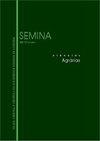Effect of tolfenamic acid in postpartum gilts and the performance of their piglets
IF 0.5
4区 农林科学
Q4 AGRICULTURE, MULTIDISCIPLINARY
引用次数: 0
Abstract
Postpartum dysgalactia syndrome (PPDS) is a common disorder affecting sows in intensive production systems. In most cases, hypogalactia is not clearly identified and assumes a subclinical aspect. Therefore, the present study aimed to evaluate the effect of a nonsteroidal anti-inflammatory drug (NSAID) based on tolfenamic acid as a prophylactic treatment for PPDS and the performance of suckling piglets. Gilts (n = 319) were randomly divided into two groups: a tolfenamic acid group (n = 157) and a control (n = 162). The tolfenamic acid group received a single intramuscular injection (1 ml/20 kg of 4% tolfenamic acid) after farrowing, whereas the control group received no treatment. The occurrence of PPDS was confirmed. All piglets (n = 4,466) were weighed at 1, 4, and 18 days of age. All litters were evaluated for weight gain, the occurrence of diarrhea, and mortality between 4 and 18 days of age. PPDS variables were analyzed using logistic regression. Piglet weights were analyzed based on covariance while considering the effects of initial weight and the presence of diarrhea. Tolfenamic acid had no significant effect on the incidence of PPDS. The tolfenamic acid group had a 0.41% lower piglet mortality rate until 18 days of age. Tolfenamic acid administered prophylactically to gilts after farrowing reduced piglet mortality during lactation and promoted weight gain.甲苯胺酸对产后后备母猪及其仔猪生产性能的影响
产后哺乳障碍综合征(PPDS)是一种常见的疾病,影响母猪在集约化生产系统。在大多数情况下,低乳不清是不明确的,并采取亚临床方面。因此,本研究旨在评价以甲苯酚酸为基础的非甾体抗炎药(NSAID)对哺乳仔猪PPDS和生产性能的预防作用。将319头后备母猪随机分为两组:甲苯胺组(157头)和对照组(162头)。甲苯酚胺组在分娩后单次肌内注射(4%甲苯酚胺1 ml/20 kg),对照组不给予任何治疗。证实PPDS的发生。所有仔猪(n = 4,466)分别在1、4和18日龄时称重。在4至18日龄期间,对所有窝鼠的体重增加、腹泻发生率和死亡率进行评估。采用logistic回归对PPDS变量进行分析。在考虑初始体重和腹泻影响的情况下,采用协方差法对仔猪体重进行分析。Tolfenamic acid对PPDS的发生率无显著影响。甲苯酚胺组仔猪18日龄前死亡率降低0.41%。在分娩后预防性给母猪注射Tolfenamic acid,可降低仔猪在哺乳期的死亡率并促进体重增加。
本文章由计算机程序翻译,如有差异,请以英文原文为准。
求助全文
约1分钟内获得全文
求助全文
来源期刊

Semina-ciencias Agrarias
农林科学-农业综合
CiteScore
1.10
自引率
0.00%
发文量
148
审稿时长
3-6 weeks
期刊介绍:
The Journal Semina Ciencias Agrarias (Semina: Cien. Agrar.) is a quarterly publication promoting Science and Technology and is associated with the State University of Londrina. It publishes original and review articles, as well as case reports and communications in the field of Agricultural Sciences, Animal Sciences, Food Sciences and Veterinary Medicine.
 求助内容:
求助内容: 应助结果提醒方式:
应助结果提醒方式:


